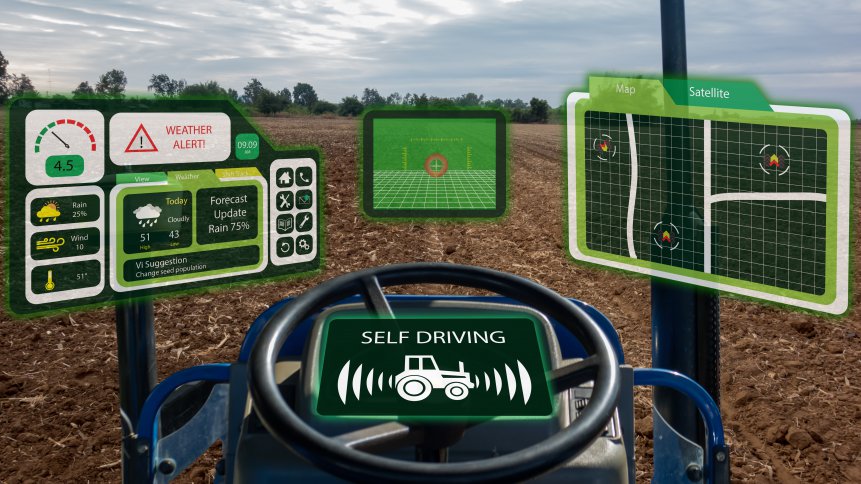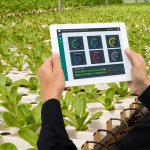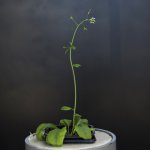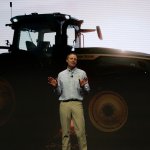From Field To Plate – How the Tech Industry Enables The Food Supply Chain, Part 1

There’s a maxim that says there is no job that can’t be made safer and more efficient by the addition of high technology. If you were looking for the perfect example of that, you only need to look as far as the global food supply chain. And, with prices rising and a recession on the way, the food supply chain is increasingly of interest to the public – but it also serves as an object lesson to the technology sector as a whole.
The number of companies involved at some specialized stage in the food supply chain is proof, if proof were needed, that there’s room for technology enterprises to intersect with practically any other world in a countless diversity of ways, all helping to bring overall costs down, improve efficiency, increase safety levels, deliver good products – and still make money along the way.
Our first consideration in the journey from field to plate is the business – or rather, the tech-enabled businesses – of agriculture as is applies to fruits, vegetables, herbs and grains.
Agri-Tech
The ways in which technology and agriculture work together are collectively known as agri-tech. And agri-tech is transforming the process of growing the ingredients of our daily bread.
The RoboTractor
Agriculture was a perfect sector for revolutionizing by industry. It became a perfect sector for revolutionizing by computer. And now it is proving to be a perfect sector for revolutionizing by digital transformation and next level technology.
Often, when people think of agriculture, one image dominates – the idea of a tractor or similar farm vehicle going up and down a field. Sure, that’s a big part of the process, and it would be a mistake to think that’s not covered by agri-tech. After all, no less a name than John Deere made headlines by revealing its fully automated, self-driving tractor at the 2022 CES Show.
The idea of the self-driving tractor is to allow farmers to drive the beast to their field, set it to autonomous mode, and let the tractor take care of the rest – freeing the farmer up to do other critical work on their holding. The machine is fitted with six pairs of stereo cameras, allowing 360-degree obstacle detection and the calculation of distance. Images captured by the cameras are passed through a deep neural network that determines the tractor’s next movements. It also has relative geofencing, to maintain it within its intended field, and the systems on board keep it to within less than an inch of where it’s supposed to be. The aim, says John Deere, is to feed the world’s population – just under 8 billion people now, rising to 10 billion by 2050 – through precision agriculture that maximizes yield every time it’s deployed.
The Smart Greenhouse
But there’s much more to agriculture than ploughing arable crops – and much more to even ploughing arable crops than the single machine of our immediate imagining. The Internet of Things is enabling so-called ‘smart agriculture’ – a combination view of all available and useful data, including meteorological sensors, soil sensors, satellite imagery for precision farming, and more, to tell the farmer what their fields need, and when they need it. All that technology, developed by a range of different tech companies, is helping get food to plate faster, more efficiently, and for less.
It probably goes without saying, but farms are businesses above all else, so even the business management software niche has found a way to specialize products to help farmers manage their businesses.
As we said though, there’s much more to farming than that traditional image of a farmer on a tractor. In Kentucky, high-tech greenhouses are replacing outside farming of fruit and vegetables, allowing for climate control, high sensor density and growth data feedback, linked to systems that allow for intensive fruit and vegetable farming with none of the usual human-centric limitations, like having to plant strawberries far enough apart for humans to pick them. With an application of technology, the strawberries can be raised by machine when they’re ripe. And in case you’re thinking this sort of thing can only work on a small, food supply chain-insignificant scale – think again. One of the Kentucky greenhouse-farms is a 2.76 million-square-foot facility. That’s insignificant to nobody.
This techno-greenhouse method, pioneered in the Netherlands, is likewise all about getting more food to more people with maximum efficiency in a hungry world, driving down ultimate food costs by providing plenty, and yet allowing for everyone in the food supply chain, including the tech companies, to make a profit and innovate further. It uses less expensive energy, wastes less of what it uses, and requires up to 90% less harsh chemicals than ‘wild’ farming, and fundamentally, it’s tech-driven at almost every stage in the farming journey.
Modular Farming
And in terms of modifying the traditional paradigm, you can’t get more tech-heavy than the emerging idea of modular micro-farming. If you don’t happen to have 2.76 million square feet of land lying around waiting be cultivated, an Australian enterprise is taking off, using various sizes of shipping container as modular farms.
With every available sensor you could wish for in an IoT configuration, including Nest cameras, you can control the micro-climate in your modular farm from an app in the palm of your hand. While no size of shipping container is going to rival large-scale and more industrial techno-agriculture, it’s a way of allowing smaller would-be farmers to enter the market and offer locally grown, low-carbon-footprint ingredients to customers in their area, and by doubling or trebling the amount of container-space modular farmers use, they can even turn their outfit into a speciality farm business that grows beyond a local interest.
These examples barely scratch the surface of the vast scope of technology to digitally transform agriculture as we’ve known it into something that feeds the food supply chain with more product for less energy, with more certainty and precision. But they serve as a taster of the vast scale of the opportunities for tech businesses to intersect with other economic areas, and to do their part to both feed the world, and potentially, help save it from traditional over-farming.
In Part 2, we’ll look at how technology is transforming meat, fish, and vegan food production. Part 3 will show how technology is streamlining the transport and storage of our food, and in Part 4, we’ll examine the final stage of the journey, from warehousing to stock ordering, to barcoding, to self-checkout registers and loyalty discount apps.










